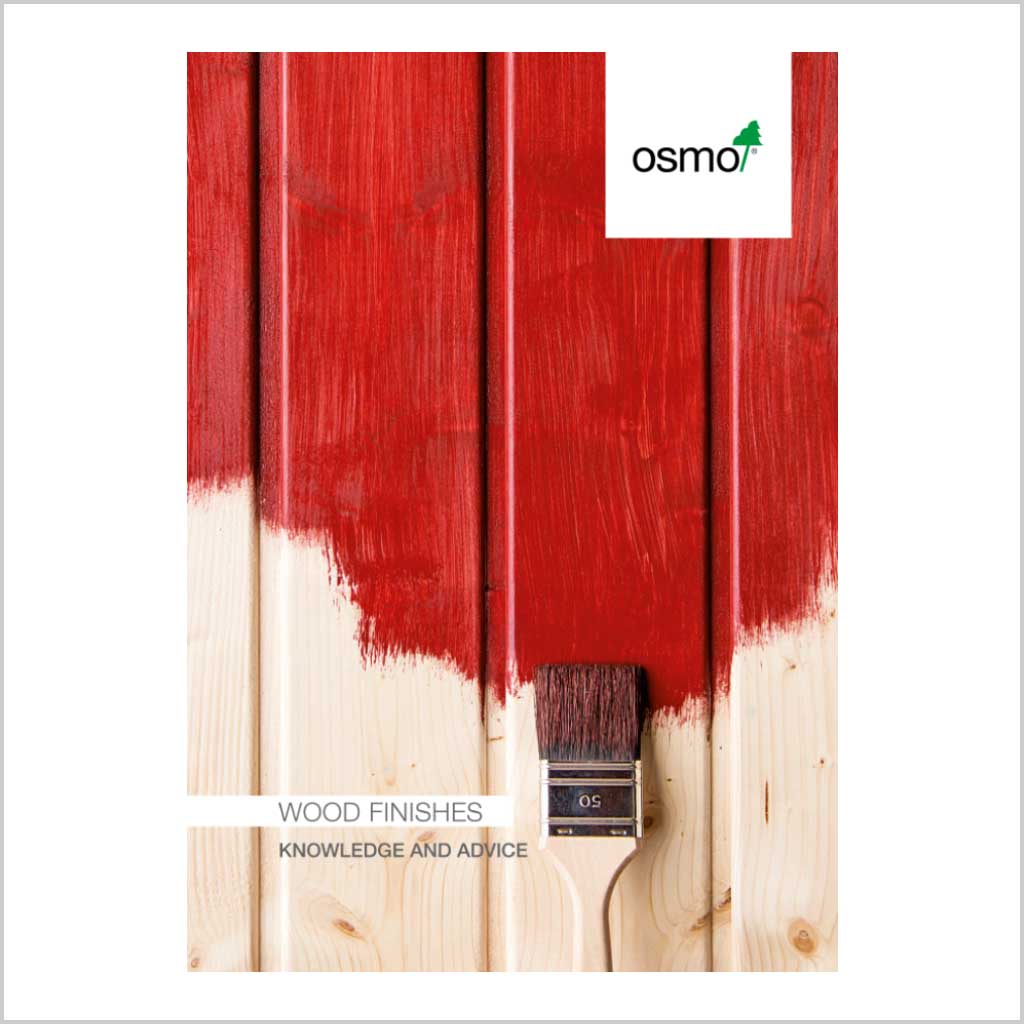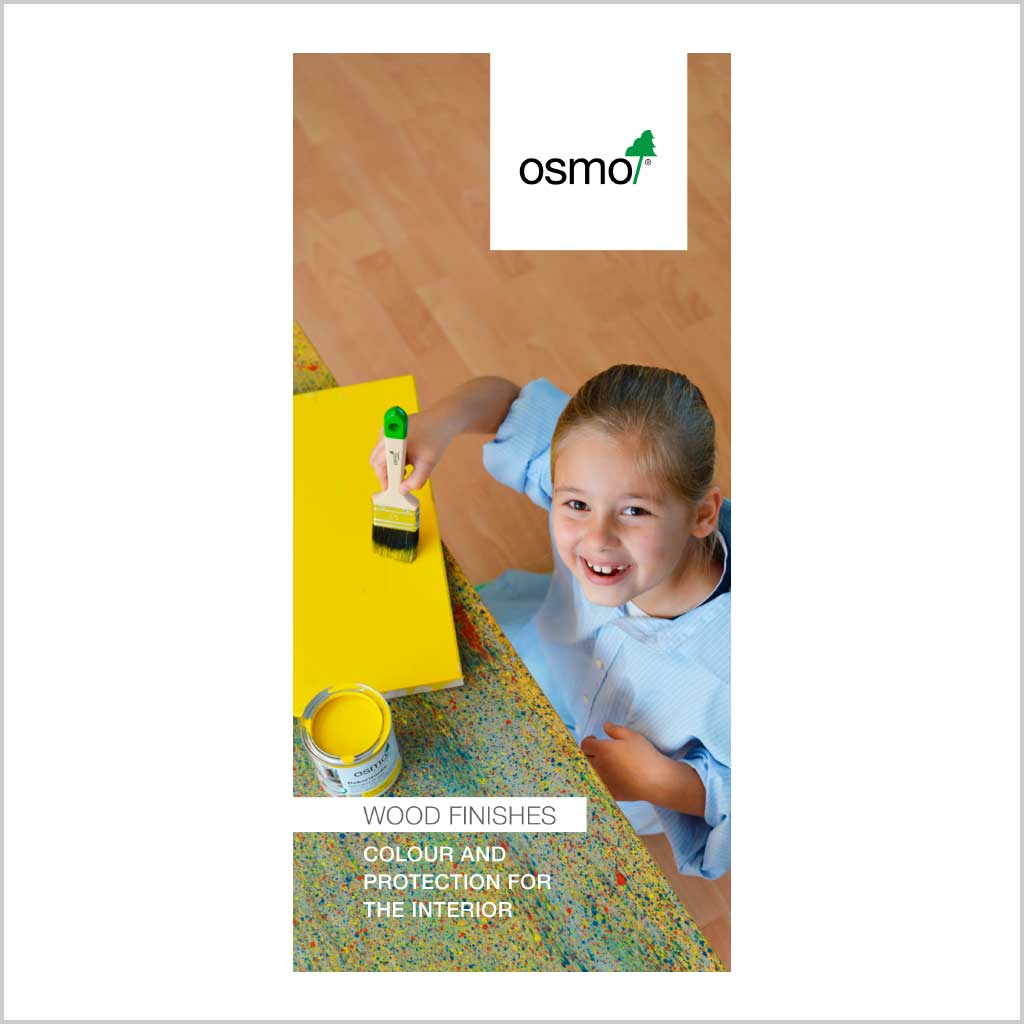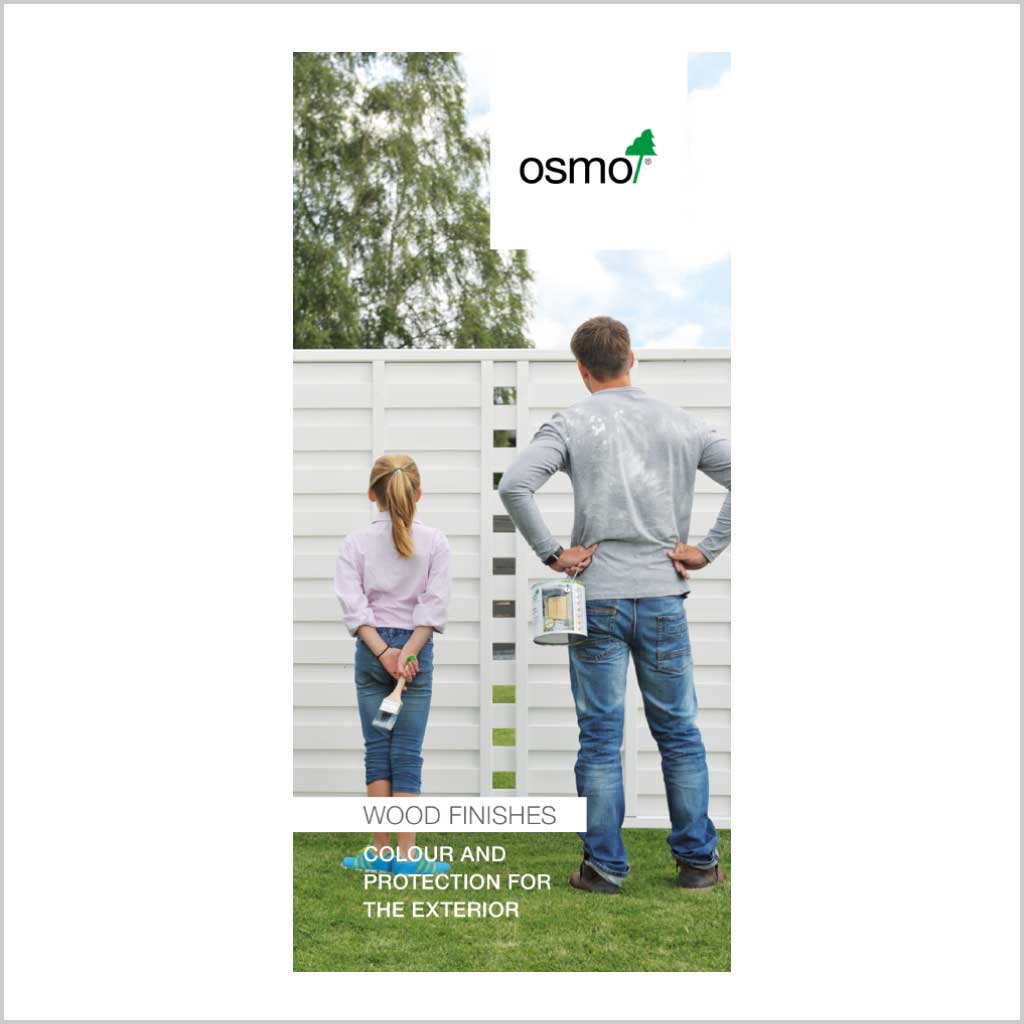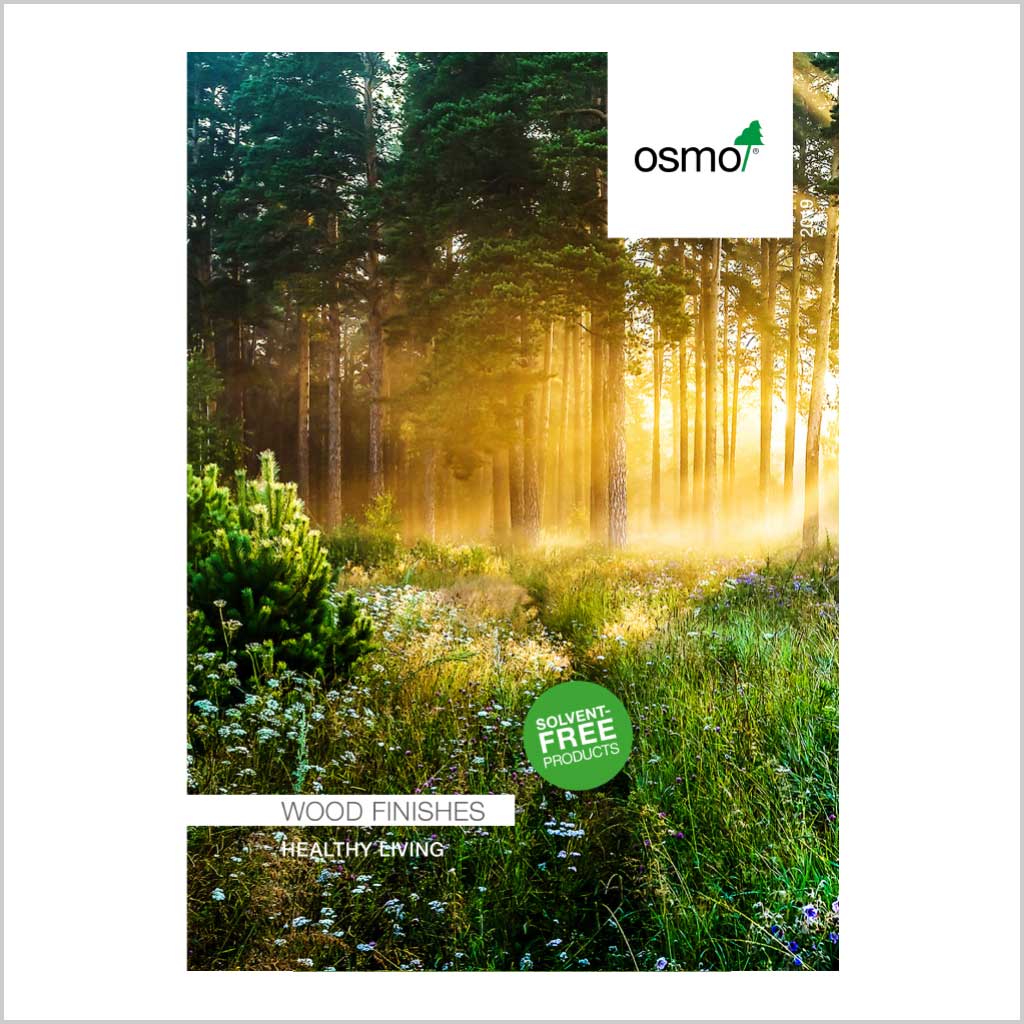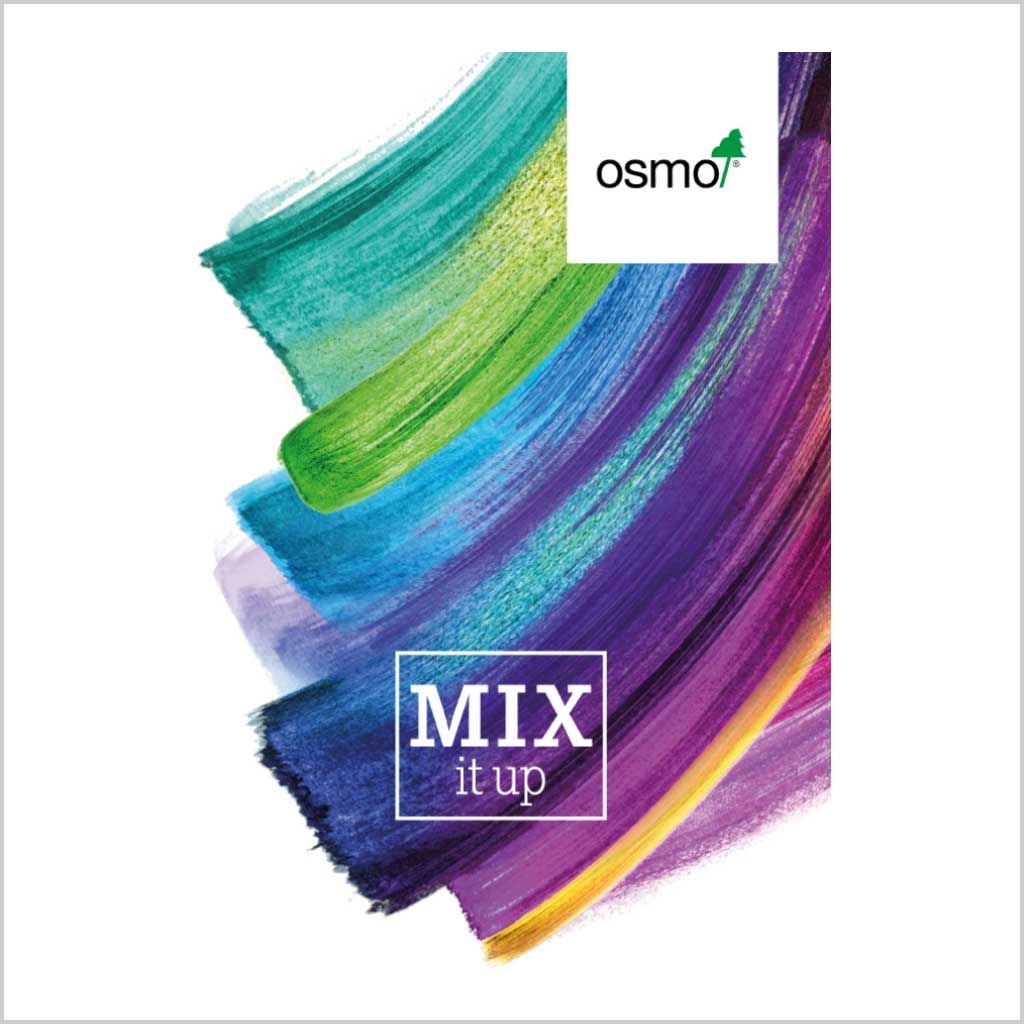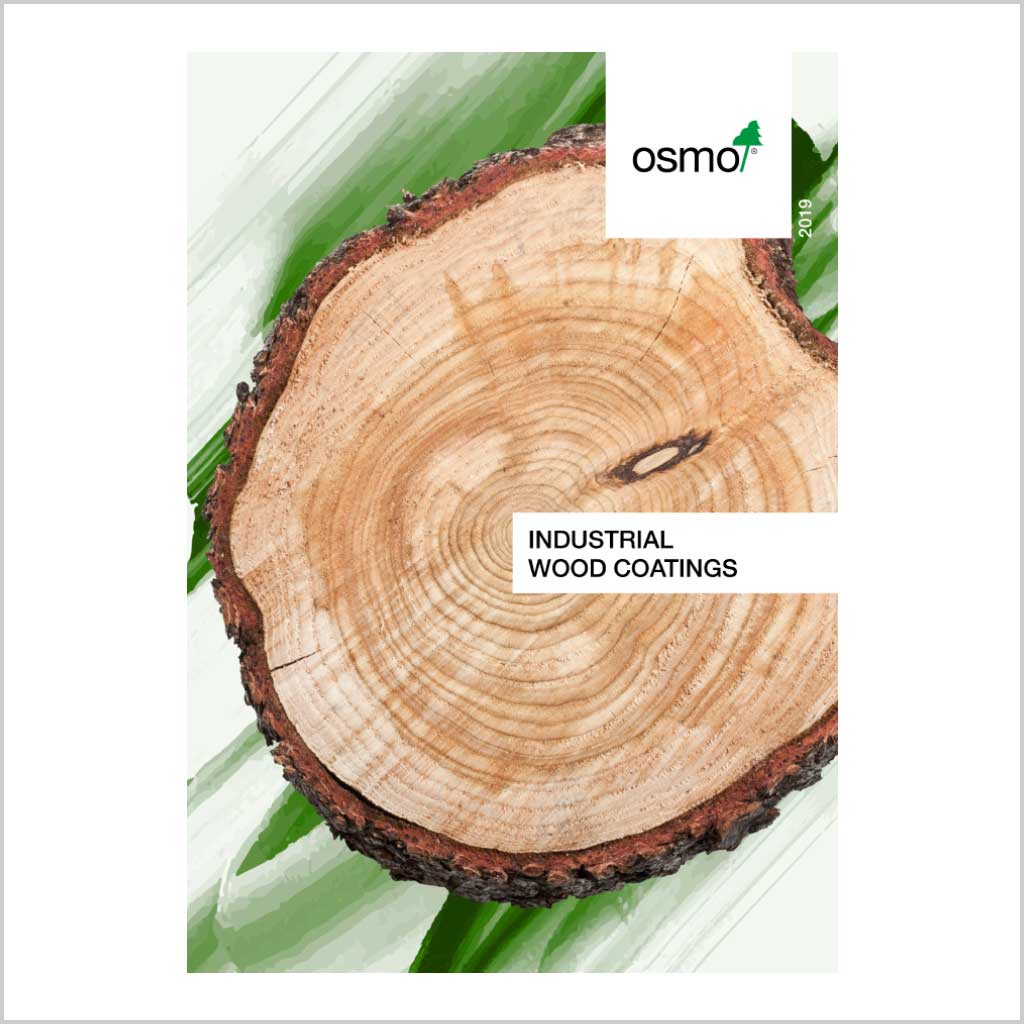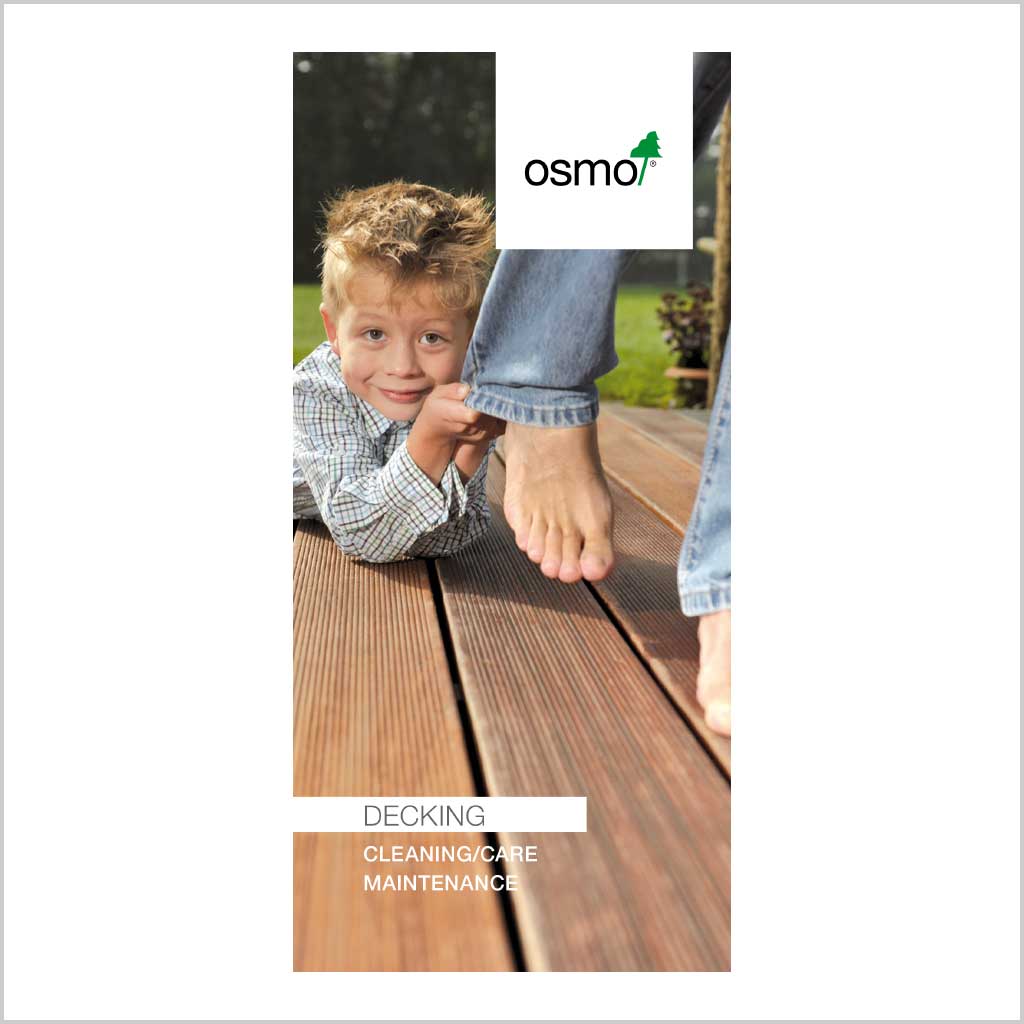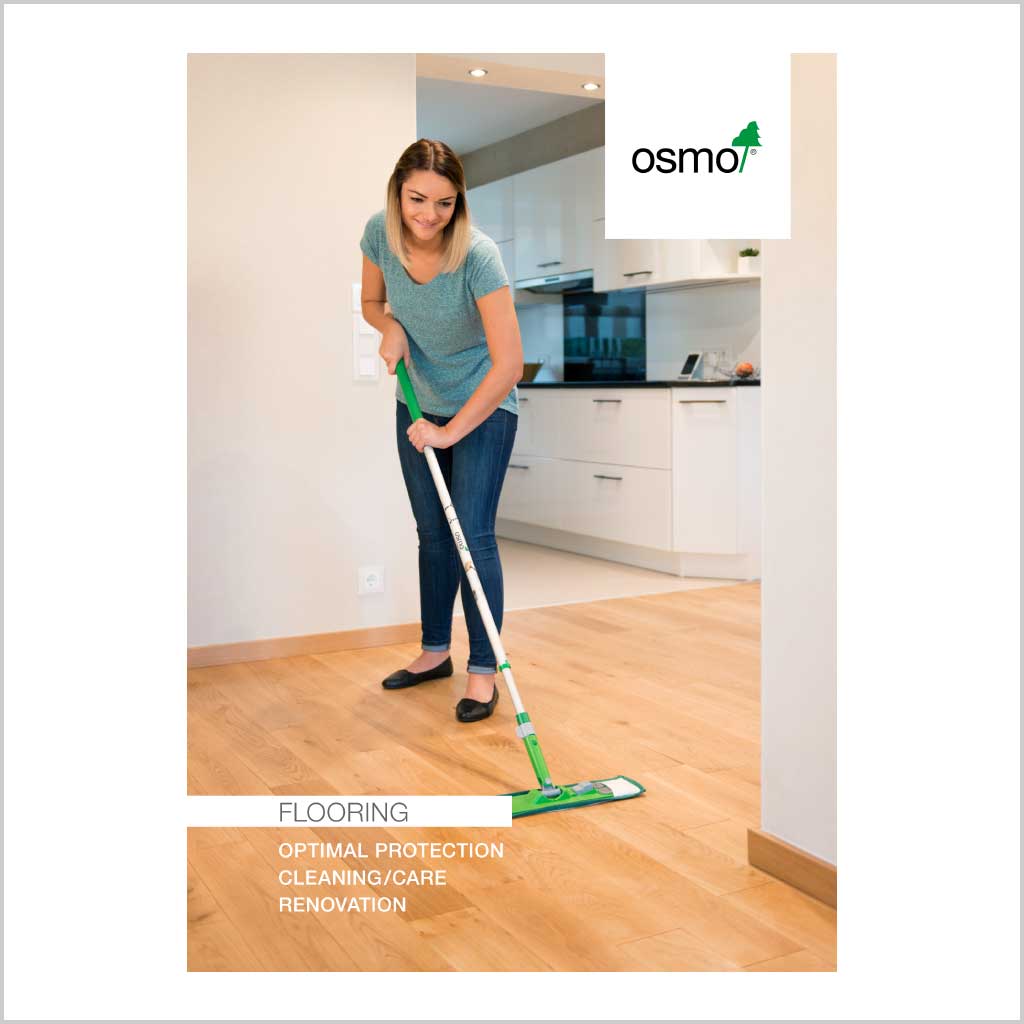Let's Share
our Experiences Together!
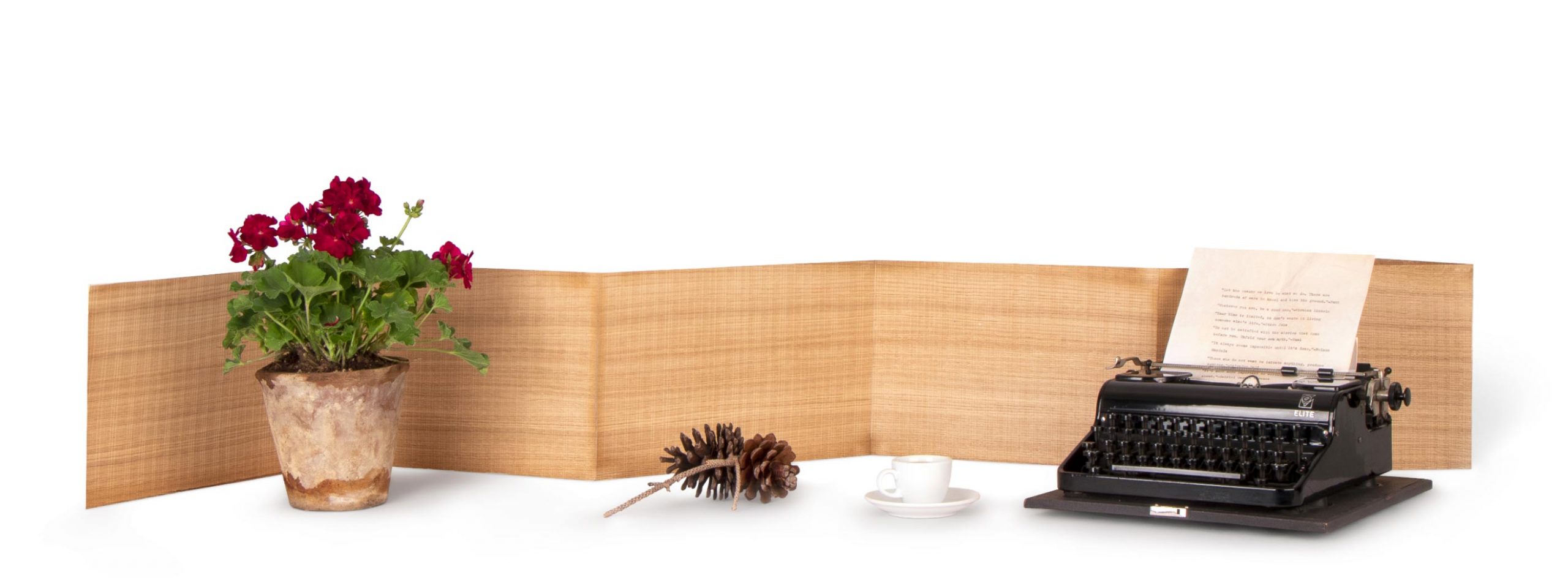
Life is about Creating and Living Experiences that are Worth Sharing. — Steve Jobs
Catalogues:
Presentation & Training Videos:
Osmo, Well-Reputed German Company with Over 140 Years of Experience. Export to More than 60 Countries. More than 300 Employees. “Made in Germany”
Unique Advantages of OSMO in Comparison with other Wood Finishes.
Wood to Know! Short Comparison of Osmo and Water-based Finishes - Part 1
Wood to Know! Introduction of Osmo Wood Wax Creativ (Interior) - Part 2
Wood to Know! Introduction of Osmo Natural Oil Woodstain (Exterior) - Part 3
Wood to Know! Introduction of Osmo Polyx®-Oil Original (Interior) - Part 4
How-to Guide: Prepare a Wood Surface for Treatment with Osmo Oils
How-to Guide: Application of Osmo Polyx®-Oil Original
How-to Guide: Professional Application of Osmo Polyx®-Oil Pure
How-to Guide: Cleaning of Wood Surfaces Treated with Osmo Polyx®-Oil
How-to Guide: Easy Spot and Partial Repairs with Osmo
How-to Guide: Professional Cleaning of Wood Flooring and Decking Surfaces with Osmo
How-to Guide: Refreshing Old Exterior Wood Decking and Cladding with Osmo
Osmo UV-Polyx®-Oil - Perfect Coating System for Flooring & Furniture Industries
Questions & Answers:
Extended drying times and sticky surfaces are often the result of over-application. There are several other reasons as to why this may occur however, which all relate specifically to a lack of oil penetration. Osmo finishes must always absorb the surface of the wood. Please check carefully if any of the following is applicable:
-
Over application - a maximum of two thinly applied coats is recommended with brush or roller applications. A maximum of four thinly applied coats is recommended with cloth applications. Applying thickly or generously results in very little or no penetration, whilst an excessive number of applications leaves surplus oil to remain on the surface. Over-application not only extends the drying time, but also creates a sticky/tacky surface which attracts the likes of dust, dirt and lint. The surface may also become more susceptible to scratches and wear more quickly.
Remedy: allow for extra ventilation and remove excess application immediately with a clean and dry cloth. If the excess has already dried, the use of methylated spirit helps to degrease the surface from the excess. Depending on the amount of excess, sanding may be necessary. -
Previous treatments - varnishes, lacquers and other surface coatings block the absorption of oil into the wood.
Remedy: sand the surface completely and re-apply. -
Unsuitable for the wood - ingredient-rich hardwoods such as Teak, Mahogany, Iroko, Cedar etc. naturally contain a high amount of oils or resin, thereby the addition of further oil is likely to result in excess/surplus on the surface. Special products have been developed to absorb these types of woods, be sure that you are using the most suitable product for the wood it is being applied to.
Remedy: for ingredient-rich woods used in the interior we recommend a very thin application of Wood Wax Finish Extra Thin 1101. Whilst for exterior use, a weathering period of at least 12 weeks is required to allow the natural extraction of the wood's content before a thin application of a suitable exterior product is possible. The weathering period is applicable to new (ingredient-rich) timber species, after installation and/or sanding. -
Sanding too finely - when sanding, P120 is generally the most ideal finishing sanding grade to best prepare the wood's surface for application of Osmo products. A maximum grade of P240 is possible for cloth applications only. The use of finer sanding grades further closes the grain and reduces the surface porosity, thereby resulting with surface excess and extended drying times.
Remedy: degrease the surface with methylated spirit to reduce any surface excess where possible, followed by sanding the surface using most suitable grade of sandpaper for the wood you have and for your choice of application method. - Conditions - the area of application must be well ventilated and in dry conditions. The ideal temperature for application is 23°C with 50% relative humidity. Lower temperatures and/or higher air humidity can increase drying times.
Osmo products contain natural vegetable oils; linseed oil, sunflower oil, soybean oil as well as thistle oil. The interior range of products also contain natural vegetable waxes; carnauba wax and candelilla wax. Please refer to the product data sheet for a declaration of the product ingredients.
The wood finishes are produced only by Osmo Holz und Color GmbH & Co. KG and just in Münster, Germany.
Yes, it is possible. Interior wood finishes from Osmo can also be used in outdoor areas. Since these are not protected against weathering and UV radiation, they may need to be recoated more often. Even some of Osmo exterior finishes, e.g. Osmo Country Color, can be used in indoor areas. They do not contain any biocides and are even suitable for children’s toys.
Osmo transparent finishes are colour shades which allow the wood's natural grain and other characteristics to remain visible, thus providing a 'transparent' optic.
Clear finishes do not contain any colour pigments and as a result provides the wood with a warm, rich and enhanced colour tone.
If an almost invisible effect is desired, please avoid using a clear finish and instead look at the possibility of using 3044 Raw for the interior or 429 Natural for the exterior. Always check the suitability of the product in combination with the wood it is being applied to and trial apply first.
The storage stability of a product is always stated in Osmo product information sheets or on the product label. When kept dry and free of frost, Osmo oil-based finishes can normally be stored up to approx. 5 years in the original closed container; for water-based products, the storage stability is approx. 2 years.
Product coverage can also be found in Osmo product information sheets. It changes from product to product and depends greatly on the condition of the wood. All details on Products labels refer to smooth and planed/sanded wood surfaces. Other surfaces may lead to discrepancies in product coverage.
Osmo products are classified as B1 for flammability, they do not speed up a flame – nor do they resist a flame. We recommend to use a microporous fire-retardant product to achieve flame resistance, with a small trial application prior to use.
Yes, the colour tones within the same product range can be mixed to any ratio. For example, Polyx®-Oil Tints 3072 Amber can be mixed with either 3075 Black to darken the shade, or alternatively with 3040 White to lighten the shade.
Additionally, Osmo Wood Wax Finish, Country Colour and Natural Oil Woodstain can be mixed to any RAL or NCS colour tone as well as any of historic/discontinued colour tones can be specially mixed, with an applicable mixing charge and a 4-6 weeks delivery time.
Yes, but only for vertically structured surfaces such as cladding, fencing, doors etc. Osmo UV-Protection Oils contain special ingredients which resists UV rays from the sun to a factor of 12 in comparison to untreated wood.
Horizontally structured surfaces such as decking and uncovered garden furniture allows rain to remain on the wood surface for potentially long periods of time, thereby reducing the UV resistance significantly, to the extent that we do not recommend using a clear finish on these types of surfaces unless a naturally greying effect is desired over time. UV-Protection Oil requires a minimum drip angle of 15°C to offer a suitable resistance.
Osmo Polyx®-Oil 2K (6125) has a special curing time of 4 hours, which means the floor can be used as normal after this time. However, the other Polyx®-Oils have a drying time of 8-12 hours and a full curing time of approx. 10-14 days – during this time we advise you to keep floor traffic to a minimum and not to cover the surface as this will block the oxidation process which can cause the surface to discolour.
As Osmo product is designed to absorb into the wood, it will not be able to do so through the sealant. We recommend to apply Osmo product directly onto the wood first and leave to dry, afterwards you can use a silicone sealant or mastic.
Osmo Polyx-Oil 2K, 5125, and entire Professional Colour Oil range is solvent-free and 50 g/l VOC and is great for the professionals, designers and architects who want a solvent-free coating, but do not want to compromise on quality or colour choice!
It is not absolutely necessary to wear protective clothing for personal safety.
A primer is applied before the application of a coating to improve adhesion to the wood. It does not provide the wood any protection and is not necessary for any of the Osmo wood finishes. Impregnation is solely a protective measure for wood to extend its durability and to protect it against harmful organisms.
For wood species susceptible to blue stain, such as Spruce or Pine, it is recommended to apply impregnation to protect the wood before finishing the surface with an Osmo product. Wood species rich in wood extractives, such as Larch or Douglas Fir, impregnation can be applied but it is not necessary.
Pressure impregnated wood can be coated with any of our exterior wood finishes, but it should weather for at least 6-8 weeks after installation before applying the finish. In this time, excess impregnation is washed out of the wood so there is space in the wood for the oil finish to be absorbed. Due to the colour tone of the pressure impregnation, the colour of the wood stain may look different to the sample on the label.
Wood surface must be clean, dry and frost-free with a maximum moisture content of 20% (be cautious with woods with high moisture, such as green oak). Clean or slightly sand old microporous (oil-based) finishes or remove old varnishes and lacquers by sanding.
Sand carefully starting with a coarse grade of sandpaper depending on the condition of the wood and use the following as a guidance only for which final grade of sandpaper to use before application.
Prior to a brush or roller application:
P100-120: for ingredient-rich hardwood species.
P120: provides best results for most wood species.
P150: for softwood species.
Prior to a cloth application:
P180: for ingredient-rich hardwood species prior to a cloth application.
P200-240: for most wood species prior to a cloth application.
Remove dust thoroughly from the surface before application with a vacuum cleaner. Application temperature preferably over 5°C in a good ventileted area.
For interior use: Osmo Wood Protector is recommended for woods prone to moisture, usually in bathrooms or kitchens. It is not necessary to use on ingredient-rich hardwood species.
For exterior use: Osmo WR Base Coat is recommended for exterior conferious wood species such as Pine or Spruce to impregnate the wood for increased protection.
For ingredient-rich hardwoods (such as Sapelli, Sipo, Iroko, Teak etc.) we recommend using Osmo Wood Wax Finish Extra Thin for interior wood. Although for most exterior ingredient-rich hardwoods we recommend exposing the surface to external elements of weathering for at least 3-4 months before application. The high natural oil content of these types of wood are likely to resist the penetration of any further oil until it has extracted the majority of its natural content during the weathering period. Although the wood is unlikely to grey during this time, it may be necessary to apply Osmo Wood Reviver to restore the surface before application of a suitable treatment.
For renovating Osmo treated surfaces, no sanding is necessary - as long as you are using the same Osmo product that was used initially to treat the wood and within reasonable time. Re-apply onto a clean and dry surface, usually just one coat is required. Sanding may be necessary if the wood had not been well maintained and there are marks or scratches, two coats would therefore be recommended.
Osmo Woodfiller can be used to fill gaps, splits and cracks in the wood. If you will be staining the wood afterward, we recommend to use 73001 Natural since this can be coloured to match the floor colour - trial application required!
Alternatively, choose from a selection of Woodfiller colours to try to match the existing wood's colour. For larger areas, a more suitable and accurate alternative to matching the colour is Osmo Wood Putty mixed with the sanding dust to maintain the wood's natural colour.
Osmo products provide best results when applied directly onto natural wood.
Applying over other finishes may be problematic as these previous treatments may have worn in some areas more than others, causing a patchy or uneven result. We recommend to clean or slightly sand old microporous finishes, but varnishes and lacquers must be sanded before application.
Osmo Polyx®-Oil Tints offer a range of lightly pigmented wood stains or alternatively Osmo Wood Wax Finish offers a large selection of highly pigmented wood stains. Choose the colour of your choice from either of these ranges - and apply thinly just one coat using a firm brush, followed 24 hours later with a final coat of clear Polyx®-Oil*.
*Note: When applying a white colour tone, we recommend a final coat of Polyx®-Oil Tints (3040 White) instead of clear, to be able to preserve the intensity of the white colour, without yellowing.
Each product has a varied recommended application method as shown on the product's data sheet as well as the label of the can, which provides best results based on the purpose of the product. The following methods of application may apply:
- Brush application: Apply thinly and evenly along the wood grain with a firm, high quality brush and spread well. Remove any surplus or excess with a dry cloth. Usually 1-2 thin coats are required.
- Roller application: Apply thinly and evenly along the wood grain with a microfibre roller and spread well. Remove any surplus or excess with a dry cloth. Usually 1-2 thin coats are required.
- Cloth application: Apply with a dry, lint-free cloth - thinly, throughly and evenly along wood grain. Remove any surplus or excess with a dry cloth. Usually 3-4 thin coats are required. Please sure to dispose of the cloth safely to avoid ignition.
- Spray application: Apply with either a customary spray gun (nozzle 1.2-1.5mm, 1.8-2.5 bar), an airless or HVLP requipment. Apply swiftly in vertical sections along the wood grain.
- Buffing application: Spread the finish evenly with a brush, roller or wide paint scraper or an Osmo Scraper. Wait approx. 30-60 minutes for the oil to absorb. Buff the surface with a single-disc machine using a white pad. Apply second coat spreading the finish evenly across the surface using a white pad. 2-3 coats may be required depending on the product being used.
- Osmo Spray Wax: for interior flooring and stairs
- Osmo Uviwax®: for interior walls and joinery
- Osmo Teak-Oil Spray: for exterior garden furniture and decking
- Osmo Liquid Wax Cleaner Spray: for the occasional cleaning and maintenance of all interior wood
- Osmo Spray-Cleaner: for the regular cleaning and maintenance of furniture and worktops.
Sanding is not necessary between coats. However, de-nibbing with a pad may help to reduce any imperfections from the surface between each coat.
It is important to avoid the use of wire wool to carry out this task.
- Osmo Polyx®-Oil 2K
- Osmo Professional Colour Oil
- Osmo Maintenance Oil
- Osmo Wash and Care
- Osmo Liquid Wax Cleaner
Osmo application tools are recommended for use because they are designed for quick and easy application. Osmo Finishes only require a thin application, for instance Osmo brushes are of the highest quality with firm and tight bristles, so that you can apply thinly, enabling the finish to be spread well and thoroughly, achieving the highest possible coverage.
For roller or brush applications; a maximum of two coats is recommended. Osmo finishes are designed to penetrate into the wood, application of a third coat is unlikely to absorb.
For cloth applications; three or four coats is recommended. When applying with a cloth, most of the oil is taken off the surface at the same time, ensuring a very thin application process.
Extended drying times and sticky surfaces are often the result of over-application. There are several other reasons as to why this may occur however, which all relate specifically to a lack of oil penetration. Osmo finishes must always absorb the surface of the wood. Please check carefully if any of the following is applicable:
-
Over application - a maximum of two thinly applied coats is recommended with brush or roller applications. A maximum of four thinly applied coats is recommended with cloth applications. Applying thickly or generously results in very little or no penetration, whilst an excessive number of applications leaves surplus oil to remain on the surface. Over-application not only extends the drying time, but also creates a sticky/tacky surface which attracts the likes of dust, dirt and lint. The surface may also become more susceptible to scratches and wear more quickly.
Remedy: allow for extra ventilation and remove excess application immediately with a clean and dry cloth. If the excess has already dried, the use of methylated spirit helps to degrease the surface from the excess. Depending on the amount of excess, sanding may be necessary. -
Previous treatments - varnishes, lacquers and other surface coatings block the absorption of oil into the wood.
Remedy: sand the surface completely and re-apply. -
Unsuitable for the wood - ingredient-rich hardwoods such as Teak, Mahogany, Iroko, Cedar etc. naturally contain a high amount of oils or resin, thereby the addition of further oil is likely to result in excess/surplus on the surface. Special products have been developed to absorb these types of woods, be sure that you are using the most suitable product for the wood it is being applied to.
Remedy: for ingredient-rich woods used in the interior we recommend a very thin application of Wood Wax Finish Extra Thin 1101. Whilst for exterior use, a weathering period of at least 12 weeks is required to allow the natural extraction of the wood's content before a thin application of a suitable exterior product is possible. The weathering period is applicable to new (ingredient-rich) timber species, after installation and/or sanding. -
Sanding too finely - when sanding, P120 is generally the most ideal finishing sanding grade to best prepare the wood's surface for application of Osmo products. A maximum grade of P240 is possible for cloth applications only. The use of finer sanding grades further closes the grain and reduces the surface porosity, thereby resulting with surface excess and extended drying times.
Remedy: degrease the surface with methylated spirit to reduce any surface excess where possible, followed by sanding the surface using most suitable grade of sandpaper for the wood you have and for your choice of application method. - Conditions - the area of application must be well ventilated and in dry conditions. The ideal temperature for application is 23°C with 50% relative humidity. Lower temperatures and/or higher air humidity can increase drying times.
Allowing for extra ventilation into the room will allow as much air flow as possible. Only natural air can help the drying process. We do not recommend to turn the heating up higher than normal room temperature since this creates a higher humidity and a reduced possibility of the finish absorbing the wood, this instead increases the risk of the finish drying too quickly on the surface instead of absorbing into the wood naturally.
Oils such as the clear Polyx®-Oil accentuate the natural colour and grain of the wood (permanent wet-look).Polyx®-Oil Effect (3044 Raw) counters this exaggeration of the wood's colour, leaving the surface looking natural in it's new or raw condition. The finish is close to being invisible to the eye and retains as much of the wood's natural colour as possible. Suitable for interior use onto untreated or sanded wood only.
For exterior use, UV-Protection Oil Tints 429 Natural may be a suitable option, depending on the structure and species of the wood.
All exterior wood greys over time during exposure to the sunlight. UV rays damage the wood lignin which results in fading grey discolouration of the wood. Osmo Wood Reviver Power Gel is highly effective when restoring the greyed wood fibres almost entirely back to the wood's original natural colour and character. Treatment with any of the Osmo exterior product range is recommended afterward.
As soon as the Polyx®-Oil has dried after application of two coats, the floor can be used immediately with light traffic. However, the finish takes approx. 10 days to complete the curing process. During this time we do not recommend you to cover the surface with rugs or carpets etc. as this can cause the wood to discolour.
Osmo Teak Oil (007 Clear) is the recommended product to use to achieve a clear and natural finish on decking. Please note that this does not offer any UV protection. To protect the wood against greying, a pigmented finish such as any of the coloured Osmo Decking Oils or Osmo Natural Oil Woodstain is required.
Products can be thinned with a solvent, such as Osmo Brush Cleaner & Thinner.
After treatment of Osmo Polyx®-Oil, we recommend to maintain your floor regularly with Osmo Wash and Care and occasionally with Osmo Liquid Wax Cleaner.
After treatment of Osmo TopOil, we recommend to maintain your worktop regularly with Osmo Spray-Cleaner and occasionally with Osmo Liquid Wax Cleaner.
After treatment, we recommend to maintain your decking and garden furniture occasionally with Osmo Decking Cleaner. If your wood has faded and starts to discolour into a greyed effect, we recommend to use Osmo Wood Reviver to remove the grey and revive back to original colour. Afterward, re-application of a suitable treatment is recommended.
Exterior wood can grey over time after exposure to the sunlight. UV rays cause wood the discolour and fade into a grey effect. Osmo Wood Reviver is designed to remove the greyed wood fibres to revive back to the wood's natural colour and character. Treatment with any of the Osmo exterior product range is then recommended.
Osmo Woodfiller can be used to fill gaps, splits and cracks in the wood. If staining the wood, we recommend to use the '73001 Natural' as this can be coloured to match the appearance. Otherwise, choose one of the other colours from the Woodfiller range to try and match the existing wood's colour. Alternatively, we recommend using Osmo Wood Putty which is to be mixed with the sanding dust when sanding the wood. This will achieve an exact match for the wood's natural colour.
